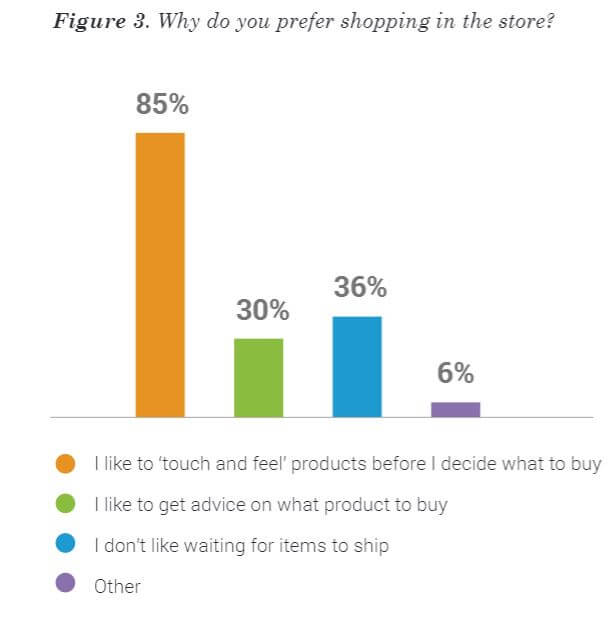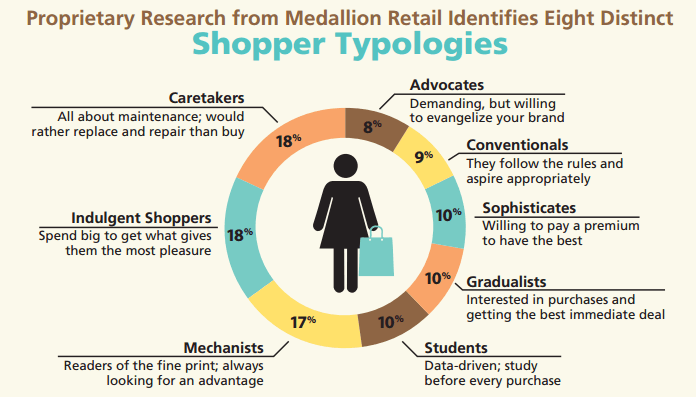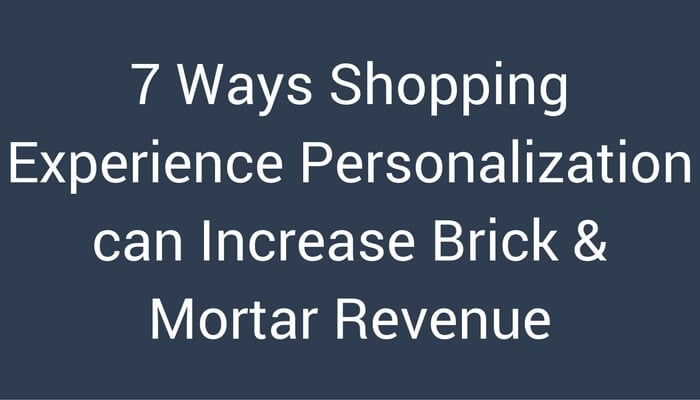Do you remember the theme song of the 1980s sitcom “Cheers”? It says that “sometimes you want to go where everybody knows your name”. When it comes to retail, most clients want just that. According to research, 46 percent of shoppers will buy more from a retailer that personalizes their shopping experience. Moreover, according to a RightNow Customer Impact Report, 86 percent of consumers will pay up to 25 percent more for a better customer experience.
Playing Catch-Up
eCommerce has been leading the charge for sure. Companies developed tracking technologies, recommendation engines, chatbots, and big data analytics systems in an attempt to “get personal” with online buyers.
This worked quite well. Online retailers now take advantage of tech to create personalized experiences for customers across digital channels. As consumers, this has made us somewhat spoiled. We don’t only want a personalized shopping experience. We expect it. And according to research by Adobe, most brick-and-mortar retailers fail to deliver (even though they think they’re doing great).
So, as a classical brick-and-mortar retailer, what can you do to step up your game and bring the online shopping experience to the offline world?
Know Your Advantages
Brick-and-mortar vs e-commerce is not really a competition. In many ways, shops still have an edge over online purchasing. According to, well, even more research (we love numbers), 94% of total retail sales are still generated in brick & mortar stores. That’s right 94%!! And before you ask, this research project was performed in 2014, so yeah, it’s still relevant.
Your employees are the lifeblood of your organization. Ultimately, they offer the greatest potential to not only set you apart from your competition but also provide your customers with a shopping relationship – with a real human being, no less.
eCommerce, with all its personalization tech, is merely trying to mimic the service provided by an excellent sales floor employee that interacts and customizes the shopping experience through real, honest interactions.
While some sales reps are naturals at creating a personalized experience, others need to be trained. If you don’t have an on-the-job training program, it’s time you create one (no matter how small your retail business is), and make sure to personalize the training experience to what your employees want and need as well.
Another advantage you probably didn’t know you had but can capitalize on: impulse purchases happen in-store more than online.

The most important advantages, however, are those unique to your business. Your location, your staff, your exclusive products, and that special sauce that makes your brand unique. These are your personal advantages. And as such, they must be integrated into your personalization strategy, providing you with an edge.
Segment (and Understand) Your Client Audience

Personalization is about giving each individual the unique shopping experience that is right for them, and only them. No two shoppers are the same. But to start personalizing, you need to somehow categorize and characterize the people walking into your shop. There are some typologies defined out there, but the real challenge is recognizing these shoppers before they even make their first purchase. How do we do that? With technology. But more on that later.
It’s also important to understand the unique properties of your business and the behavior of your potential clients. For example, if you have a floral business next to a funeral home, your personalization strategy will probably differ greatly from one near an event venue.
Employ Technological Solutions
Our love for our mobile devices, combined with innovation in IoT (internet of things) technologies have the potential to turn the shopping experience into one that looks like a scene from a science fiction movie. More and more retailers use in-store beacons and apps to personalize and enhance the in-store shopping experience.
Odds are you can’t avoid technology when it comes to shopping personalization. However, its application depends very much on your business. You might not need an app to help users navigate your little corner shop. But you might enhance your customer experience by letting them schedule their visits to your business. It all depends on what you’ve recognized as your advantages.
Balance Personalization and Intrusion
When we think about the technological advances we mentioned above, we can’t help but remember a short scene from the movie “Minority Report”. In it, the protagonist enters a GAP store that instantly scans his eyes to personalize his experience in the shop.
This scene, to me, shows how in-store personalization can quickly go from “wow that’s awesome” to “dude, that’s creepy”. Depending on your audience and business, you’ll need to balance out personalization with privacy. For example, the information people would be willing to give in return for value differs between a floral shop and a sex shop.
The good news, however, is that you’re probably more paranoid about tech than your customers. According to a few surveys, up to 90 percent of consumers are willing to share personal information for rewards and personalization. Of course, this depends on the type of information you request, what you do with it, and how safe you keep it.
Personalize with Loyalty Plans
We love loyalty plans and the benefits that come with them. According to studies, 80 percent of shoppers report that they belong to at least one loyalty program. Not only that, but 32 percent said strong loyalty programs trump lowest price when deciding where to buy.
Loyalty programs are an invaluable resource for your shopping experience personalization efforts. They are the best way to collect information from your clients, and connect it with purchase histories and store visits. It also provides you with contact information that lets you communicate with your brand VIPs over email, phone or social media to inform them of personalized offerings waiting for them in your shop.
Empower Your Store Associates
We already touched on this previously but it’s worth repeating and expanding upon. Why? Because your employees hold the biggest potential advantage your brick-and-mortar has over eCommerce. Obviously, you can’t compete with the convenience. But, believe it or not, there are still people out there who want to have a human interaction when they’re shopping. If you can make that interaction no less than awesome, you’ll surely see dividends.
After all, as smart as a chatbot gets, they cannot replace a human when it comes to choosing a product. To clarify, your sales team shouldn’t be overly salesy. We want them to give us valuable information in the purchase making decision. Roughly 40 percent of consumers believe that a knowledgeable sales associate would greatly enhance their retail shopping experience, and personalization is part of it.
This means you need a trained and professional staff, but technology can help a lot. For example, the majority of customers use their mobile phones when showrooming. There’s no reason why your sales associates can’t too.
Imagine asking someone in the shop about the technical specifications of some product and its location in the store. They pull out a tablet, show you the product catalog and send the specs right to your phone with a discount coupon for another product you might need to compliment the one you’re looking for. It would be refreshing, after all the many times I got the answer: “Uhm… I’ll get someone from that department” from sales associates in shops.
Get Feedback
There’s probably no better way to personalize than to simply ask people what they want. We, as customers, appreciate being asked for our opinion on the services and products we pay for. For retailers, this information (if properly collected and analyzed) is not only a way to improve, but also to learn more about each client and how your efforts are affecting their shopping experience.
Keeping it Personal
Technology today empowers retailers to provide personalized shopping experiences across channels. But with great power, comes great responsibility. In crafting your personalization strategy for your brick-and-mortar business, you must consider many factors. The resources required, the training hours for store associates, and technological solutions needed, just to name a few. Each business has its own properties and characteristics, and you know your business best. And that precious knowledge, combined with our tips, is your first step to a more personal shopping experience customers will want to repeat and share.

